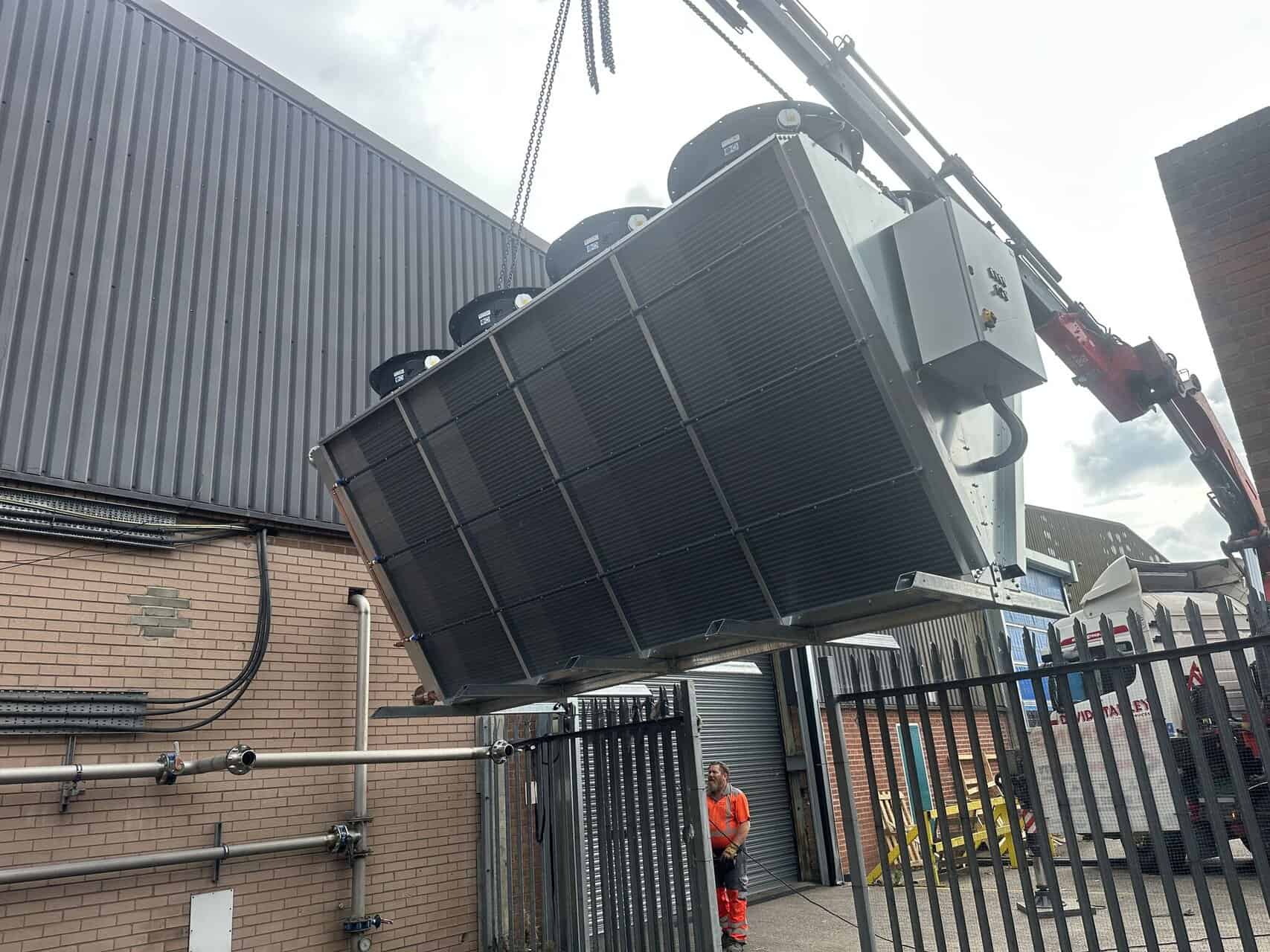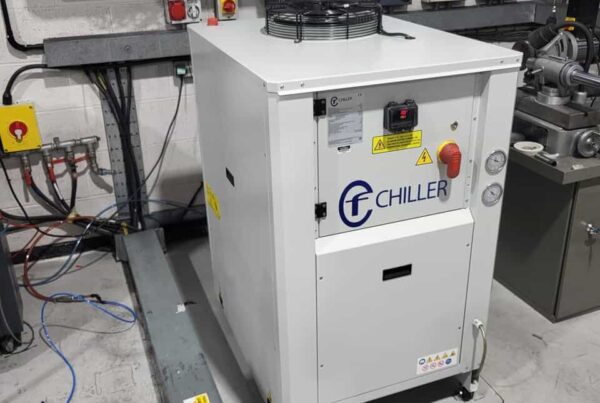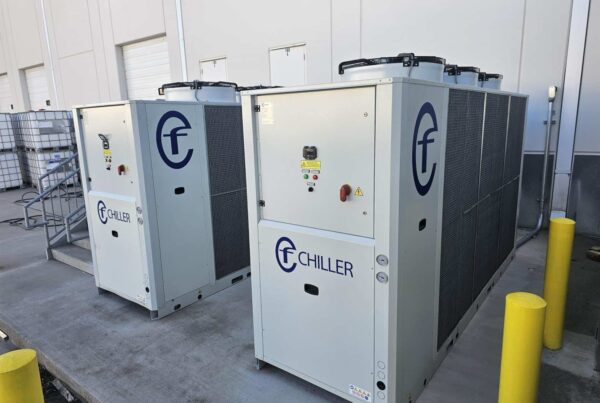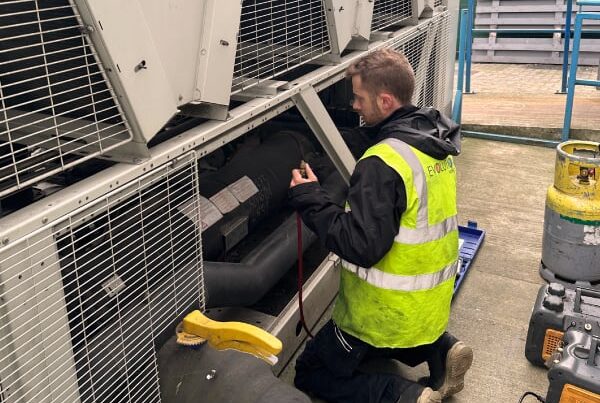=”439″ data-end=”704″>Adiabatic Air Coolers Explained: When They Beat Cooling Towers And When They Don’t</h1>
<p style=”text-align: left;” data-start=”439″ data-end=”704″>Choosing the right heat rejection method can unlock significant energy savings and resilience across UK i<h1 style=”text-align: left;” data-start=””>ndustrial sites. If you are planning upgrades before late summer peaks or scoping 2026 investment, adiabatic air coolers deserve a clear, practical look. This guide explains what they are, how adiabatic cooling works, how they compare to cooling towers on water, energy and risk, and when to choose one over the other.</p></p></p></p></p></p></p></p></h1></h1></h1></h1></h1></h1></h1></h1></h1></h1></p></p></p></p></p></p></p></p></p></p></p></p></p></p>
We also touch on Legionella considerations, F-Gas implications when paired with chillers, controls integration, and maintenance.
-start=”439″ data-end=”704″>What are adiabatic coolers and what does adiabatic cooling mean?
t=”439″ data-end=”704″>An adiabatic cooler is a dry air cooler fitted with a controlled water pre-cooling stage. In simple terms, hot ambient air is drawn across wetted pads or via a fine spray ahead of the coil. This pre-cooling lowers the air temperature entering the heat exchanger, so the cooler can reject more heat at a given ambient, or achieve the same duty at lower fan power. Most of the year the unit runs dry like a standard air cooler, then enables adiabatic mode only during hotter conditions to protect approach temperature and capacity.
In thermodynamics, adiabatic means no heat transfer to or from the surroundings. In HVAC usage it is shorthand for exploiting evaporative pre-cooling of intake air. So, does adiabatic mean well insulated? Not here. It refers to the cooling effect created as water evaporates into air at the intake, not the insulation of the device.
end=”704″>e cooling systems cool air directly for supply to a space or process, often at high humidity. Adiabatic air coolers use evaporation indirectly to improve the performance of a dry cooler rejecting heat from a closed fluid circuit. Your process water or glycol stays sealed, clean and non-evaporating.
ata-end=”704″>When adiabatic coolers beat cooling towers
For many UK sites, adiabatic coolers offer a strong balance of efficiency, water stewardship, and risk control.</p>
- Water use: Seasonal, on-demand water consumption can be a fraction of a cooling
tower’s continuous evaporation and bleed. Typical well-controlled systems see water use limited to hot days, with auto drain-down.
- nd=”704″>Hygiene and Legionella risk: There is no recirculating warm basin. With correct design, periodic purges, and sanitation of wetted media, the risk profile is materially lower than an open tower. You still need water hygiene awareness and to follow HSE L8/ACoP guidance, but the compliance burden is simpler than for a tower with a distributed aerosol plume.
- data-end=”704″>Energy performance: By pre-cooling intake air, you sustain lower leaving fluid temperatures in higher ambient conditions without ramping fans to the limit. For air cooled chillers, this can restore lift and reduce compressor power during peaks. For water or glycol circuits, it preserves approach and extends free cooling hours in shoulder seasons.
- art=””>=”439″ data-end=”704″>Installation and footprint: No large tower, basin, make-up water plant, or plume abatement. Often easier planning and lower structural demands, suitable for retrofits on constrained roofs or yards.
- -start=”439″ data-end=”704″>Water quality tolerance: Because process fluid is in a sealed loop, your plate heat exchangers and coils are protected from tower-borne contaminants. Simple filtration and periodic pad replacement typically suffice.
Which type of cooler is better?
ata-start=”439″ data-end=”704″>If your loads are variable, your site is water constrained, or you want to simplify L8 responsibilities, an adiabatic cooler can be the better choice.
Where cooling towers still win</h2>
Cooling towers remain competitive where continuous low leaving-fluid temperatures are esse
nd=”704″>ntial and ambient wet-bulb conditions are favourable. If you need very tight approach to wet-bulb all summer, a well-run tower can deliver lower water temperatures than an adiabatic dry cooler of similar footprint. For very large duties or process-critical applications with year-round high loads, the tower’s thermodynamic advantage may offset higher water treatment, hygiene management, and drift control costs. If plume is acceptable and your water management is mature, towers can be the right answer.
Is an adiabatic cooler better than a cooling tower? It depends on your duty temperature, water policy, site risk appetite, and lifecycle cost. For many UK industrial sites targeting moderate leaving temperatures, adiabatic units are the practical winner. For sub 25 to 27°C leaving fluid in sustained heat, a tower may still be required, or a hybrid solution paired with chiller trim.
Water, energy, and Legionella considerations in the UK
- HSE L8/ACoP: Any water system can pose risks. Adiabatic systems reduce aerosol water volumes compared with towers, but you still need a written scheme, competent management, and periodic inspection.
- Treat water supply to pads or sprays, schedule purge and drain-down, and document cleaning or replacement of media. This is awareness, not legal advice.
- Water consumption: Model peak-day usage and total annual consumption. Modern controls restrict wetting to the minimum needed, with humidity lockouts and staged spray. Capturing hot weather only, many sites see substantial savings compared with tower bleed and evaporation.
- Energy: Account for fan curves, coil selection, and pad pressure drop. The energy win is strongest during hot, dry afternoons when evaporative pre-cooling is most effective.
d=”704″>Maintenance and reliability
Adiabatic coolers have fewer moving parts than towers and no open basins. Maintenance focuses on fan motors and drives, coil cleanliness, nozzle or pad condition, water filters, and drain-down valves. Plan a seasonal recommissioning to test wetting, confirm purge cycles, and sanitise wetted components. A good planned preventative maintenance schedule preserves efficiency and extends pad life. If you prefer support, our team can structure a PPM around your load profile, including sensor checks, leak testing on connected chillers, and BMS alarm verification.
F-Gas Implications and Chiller Integration
Pairing adiabatic coolers with air cooled chillers reduces chiller lift in hot weather, which can cut compressor run time and refrigerant stress. That supports F-Gas compliance by lowering leak likelihood and improving seasonal efficiency. If you upgrade to lower-GWP refrigerants in future, reducing peak condensing temperatures helps your overall strategy.
yle=”text-align: left;” data-start=”439″>-en=””>d=”704″>For water cooled chillers, adiabatic coolers can replace towers or work as hybrids. You can run adiabatic free cooling in winter, then hand over to the chiller as ambient rises, with a three-way valve sequencing strategy. Controls should include ambient and humidity sensors, pad wetting logic, frost protection, and interlocks to your BMS or PLCs to ensure seamless mode changes and fault visibility.</p>
ata-start=”439″ data-end=”704″>Practical selection tips for UK sites
- <ul>s</li>
tyle=”text-align: left;”>
<ul>
- ata-end=”</yoastmark”>”704″>Define duty accurately: Leaving and return temperatures, acceptable approach, seasonal profiles, and redundancy.
- data-start=”439″ data-
end=”704″>Check climate data: Local dry- and wet-bulb,
humidity patterns, and urban heat islands. This informs pad sizing and expected water use.</p>
- Consider water policy: If water is scarce or costly, adiabatic’s seasonal consumption is attractive.</li></li></li></li></li></li
>
- a-start=”439″ data-end=”704″>Noise and planning: Roofline fans are quieter than many towers, and plume is low. Useful for permitting.
- Retrofit realities: Adiabatic units often reuse existing headers and can integrate quickly with existing air cooled chillers for a staged upgrade.
Summary and next steps
Adiabatic air coolers are dry coolers with an intelligent evaporative assist that you only use when needed. They cut water use compared with cooling towers, reduce Legionella management burdens, and improve energy performance in UK summers by lowering intake air temperature. Cooling towers can still be the right choice for very low leaving-fluid temperatures at scale, but for many industrial processes, adiabatic delivers the best balance of cost, compliance, and resilience.
If you want a clear answer for your site, book a site survey to model duty, water, and energy savings. We can evaluate adiabatic upgrades, tower replacements, or hybrid solutions, and integrate them with your existing chillers and controls so you get reliable, compliant capacity before the heat arrives.
If you need help specifying or integrating with existing equipment, our team provides HVAC installation, HVAC commissioning, and ongoing HVAC maintenance services to keep performance consistent across seasons.
📞 Call: 0121 820 8946
📧 Email: [email protected]
🌐 Visit: www.evolution-cooling.com





